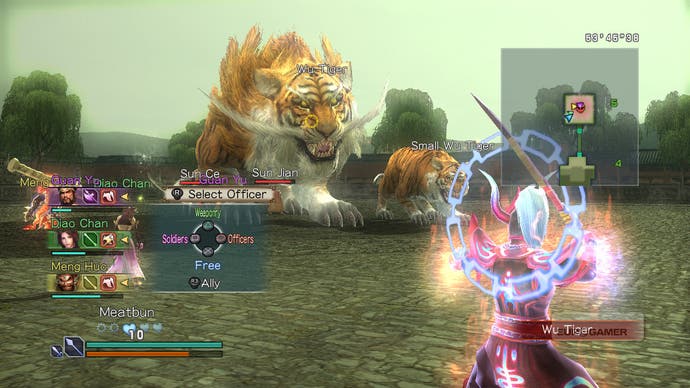Dynasty Warriors: Strikeforce
Don't be Koei.
Pity Koei, originator and now final bastion of the pseudo-historical battlefield brawler. Its flagship Dynasty Warriors, at one time the biggest-selling series in all of Japan, is viewed by most of the Western world with disdain or, worse, indifference. Once notable for pushing more polygons around an environment than just about anything else and tasking its player to carve their way, often single-handedly, through overwhelming, spear-wielding odds, the series fast settled into a rhythm of bi-annual updates that, on the surface at least, have done little to freshen the formula.
A one-trick war-horse, then? It's a familiar but unfair accusation, as too often critics and gamers ignore each iteration's subtle tweaks and novelties simply because of the aesthetic similarities to what has gone before.
Dynasty Warriors: Strikeforce is a concerted attempt by the developer to approach the series in a new way, asking, more forcefully this time, that players reassess this peculiar and bombastic brand of action game. Set within the now-familiar Three Kingdoms era of Ancient China, you choose a faction and a character within that faction to play as and set about winning the war, battle by battle.
These are, in the main, similar to what has gone before, as you cut through enemy troops, a furious one-man blur of steel fury, cartwheeling through the encroaching enemy horde as if suspended on stunt wires. The kill count for each mission often reaches the hundreds, as what the opposition lacks in competence it makes up for in sheer numbers, line after line of jabbing Chinese warriors chipping away at your health as they hassle from all sides.

Once again the visuals are functional rather than beautiful, with plain lighting and scrappy textures and a camera that must be continually wrestled into providing the best window onto the action. As a port of a PSP game, play areas are far smaller than those encountered in, say, Dynasty Warriors 6 or Bladestorm, reducing the impact of what has always been one of the unique selling points of this style of game.
Irritating loading screens punctuate each and every transition from one area to the next and the structure of each mission is abridged and simplistic: go here and defeat this person or go there and acquire that item, with none of the tactical considerations that have crept into the series recently. The voice acting throughout is camp and overstated, like a seventies kung-fu overdub, and despite the rich historical context, storytelling is both brief and shallow.
And yet, despite this litany of shortcomings and mediocrity, an engaging game emerges. In the main this is thanks to the meta-game that surrounds the battles themselves, with a number of character and weapon RPG-style development trees to draw you in. A new town hub is a literal menu: here you approach townsfolk to access the statistical underbelly of the game, where you are given, for the first time in a Dynasty Warriors game, a great deal of flexibility to customise and develop your character, their play style and weaponry, tailoring the game to suit you.








